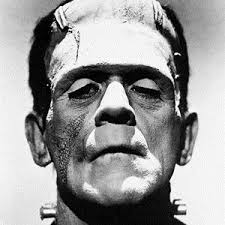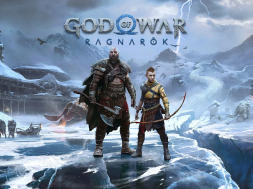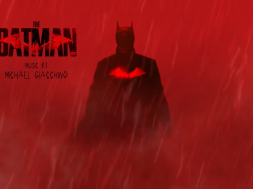
Last time, the subject of The Arcade’s weekly Book Club Review was a work that focused on a man’s life through chemistry. This week’s book is a work that speculates that the natural sciences (‘natural philosophy’ as it was known) might create life: Frankenstein. It is, of course, a book that is as well-known as it is misunderstood: many think that Frankenstein is the name of the created and not the creator. The eponymous scientist never names his creation, though the creature briefly refers to himself as ‘Adam’. This review is not simply a continuation from last week, but is timely for preempting the forthcoming adaptation for the big screen, featuring James McAvoy and Daniel Radcliffe.
was known) might create life: Frankenstein. It is, of course, a book that is as well-known as it is misunderstood: many think that Frankenstein is the name of the created and not the creator. The eponymous scientist never names his creation, though the creature briefly refers to himself as ‘Adam’. This review is not simply a continuation from last week, but is timely for preempting the forthcoming adaptation for the big screen, featuring James McAvoy and Daniel Radcliffe.
The misunderstandings that surround this book are a crying shame. It was first published under the name of the writer’s spouse, and even when Mary Wollstonecraft Shelley did come forward as author, the book, for all its success, was never recognised for what it was. It wasn’t until the following century that critics and theorists began to reappraise the book for the achievement it was. It is unfortunate that this has still yet to occur outside of academic circles.
Spoilers Ahead
Frankenstein is an epistolary novel, which is a book written as a series of documents, diary entries, newspaper clippings and letters. The story begins in the arctic. Robert Walton is leading an expedition to the North Pole in search of the Northwest Passage. The narrative is made up of a series of letters Walton sends his sister in England. During the voyage, his ship gets stuck in sheet ice. As he and his crew survey their environs they notice a figure in the distance being pulled by dogs. The following day, the crew spies another dog sled. The occupant is a European who captures the imagination of our narrator. The stranger demonstrates great learning and manners but is troubled, experiencing what today would be referred to as intense mood swings. Eventually he opts to disclose his troubles to Walton, explaining the circumstances of how he came to the arctic circle. Here begins the narrative of Victor Frankenstein.
 The major differences of the book to the many movie adaptions are as follows. First, Frankenstein is not mad. Granted, he is possessed by the idea of creating life, of conquering death, which he pursues with complete single-mindedness, but he is not quite pathological or wacky as such. Second, the monster is not the stumbling, groaning creature made popular by Boris Karloff (born William Henry Pratt). In the course of the novel, the creature brought to life by Victor shows himself to be intelligent and articulate, which he first demonstrate when he convinces Victor to listen to his story, where he relates his experiences with great pathos.
The major differences of the book to the many movie adaptions are as follows. First, Frankenstein is not mad. Granted, he is possessed by the idea of creating life, of conquering death, which he pursues with complete single-mindedness, but he is not quite pathological or wacky as such. Second, the monster is not the stumbling, groaning creature made popular by Boris Karloff (born William Henry Pratt). In the course of the novel, the creature brought to life by Victor shows himself to be intelligent and articulate, which he first demonstrate when he convinces Victor to listen to his story, where he relates his experiences with great pathos.
The book’s treatment of religion and religious imagery alone makes it worth revisiting. The Creature is analogised as a fallen angel in rebellion against the creator that abandoned him. He compares himself to Adam but by his own admission, Lucifer would be just as fitting. It is for this reason the phrase ‘Frankenstein’s Monster’ falls utterly short of the character it refers to, at least when it comes to the source material. By the same token, the creator Frankenstein is seen in angelic terms. His having created life constitutes what is know as hubris; arrogance, presuming a superiority that is above his station – which is covered in a classical allusion from the subtitle ‘The Modern Prometheus’. Creating life when it was not his place to do so likens him to the fallen angel his own creation speaks of. Moreover, Frankenstein being a cautionary tale, the eponymous Victor acts as a herald, a harbinger, warning Walton, and by extension the reader, of the dangers inherent to unscrupulous curiosity in the name of progress.
The book is far more than just the shock-fest that it was written off as for so long. It is a crucial text in the formation of Gothic fiction and science fiction as well. The book’s subtlety in imagery is equaled only in form. The epistolary structure mirrors the formation of The Creature at the centre of the frame narrative. Like The Creature, whose limbs are taken from graves on the outskirts of the city, the text is a compilation of voices from heterodox sources.
Mary Shelley‘s novel is an incredible feat of imagination; that much was conceded in her own time. Yet, as I look over my copy of this incredible and formative work of fiction, I am struck most of all by its craft. If you’ve yet to read this remarkable work, then I urge you to do so.
Have you read Frankenstein? Did you like it? Are you hopeful for the forthcoming adaptation? Do you have a preferred adaptation? Let us know in the comments below!










